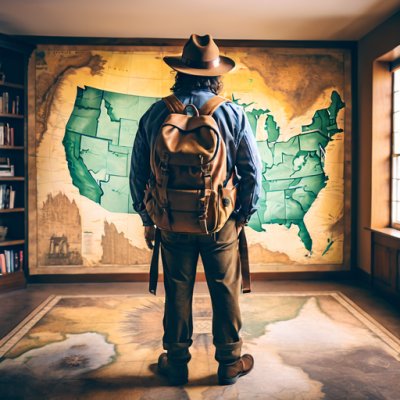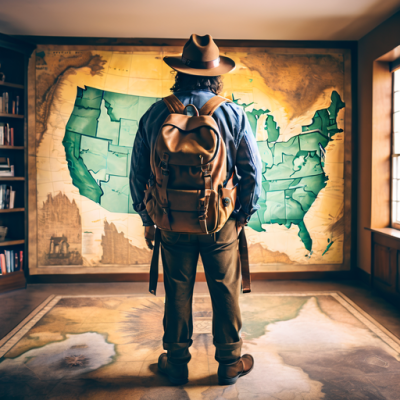
Top 5 States for Living Off-Grid in the USA

Arizona: Sunshine and Freedom
Nestled in the arid Southwest, Arizona boasts abundant sunshine, making it an ideal hub for solar power. Its vast rural areas offer relatively affordable land and, in certain regions, lenient regulations that facilitate off-grid living. Communities in places like Apache County have embraced sustainable, off-grid lifestyles, encouraging like-minded individuals to join their ranks.
New Mexico: Serenity and Space
Similar to Arizona, New Mexico provides ample sunlight for solar energy and pockets of affordable land. Some counties, such as Taos, are known for their off-grid communities and more relaxed building codes, fostering a supportive environment for those seeking a life disconnected from traditional utilities. Hundreds of square miles area around Alberqueue are dotted with off-grid ocmmunities
Texas: Large and Wild
The Lone Star State’s huge acreage caters to all off-grid aspirations. Depite its arid climate – Texas combines vast expanses of land with fewer zoning regulations, especially in rural regions. Areas like Terlingua in West Texas have become hotspots for off-grid living, offering a balance between seclusion and community.
Oregon: Green and Progressive
Oregon’s allure lies in its more liberal land use policies in certain areas and a generally supportive attitude toward sustainable living. While the state experiences ample rainfall on the western (Pacific Ocean) side of the state, it also features communities that embrace off-grid practices, particularly in counties like Josephine and Curry. The eastern side of the state boasts more arid land, which may have more challenges due to less rainfall overall.
Alaska: The Ultimate Frontier
For those seeking true isolation and a connection with untamed nature, Alaska stands as an enticing choice. Its remote and spacious landscapes beckon those looking for a complete break from mainstream living. While harsh winters can pose challenges, the state’s independent spirit and vast wilderness appeal to off-grid enthusiasts.
Key Considerations for Off-Grid Living
While these states offer favorable conditions for off-grid living, regulations and local ordinances vary significantly within each state. Before embarking on an off-grid lifestyle, thorough research on specific counties, land-use policies, water rights, and building codes is essential. Additionally, considerations about climate, access to resources, and community should factor into the decision-making process.
Embracing Off-Grid Freedom
Off-grid living embodies a desire for independence, sustainability, and a closer connection to nature. Whether one seeks the arid deserts of the Southwest, the rugged terrains of Alaska, or the green landscapes of Oregon, these states provide opportunities for individuals or communities to forge their path toward self-reliance and off-grid freedom.
Do you live in any of these states? If so, do you live off-grid or want to live off-grid? Tell us about your experiences where you live. Leave comments or write to news@off-grid.net
…





